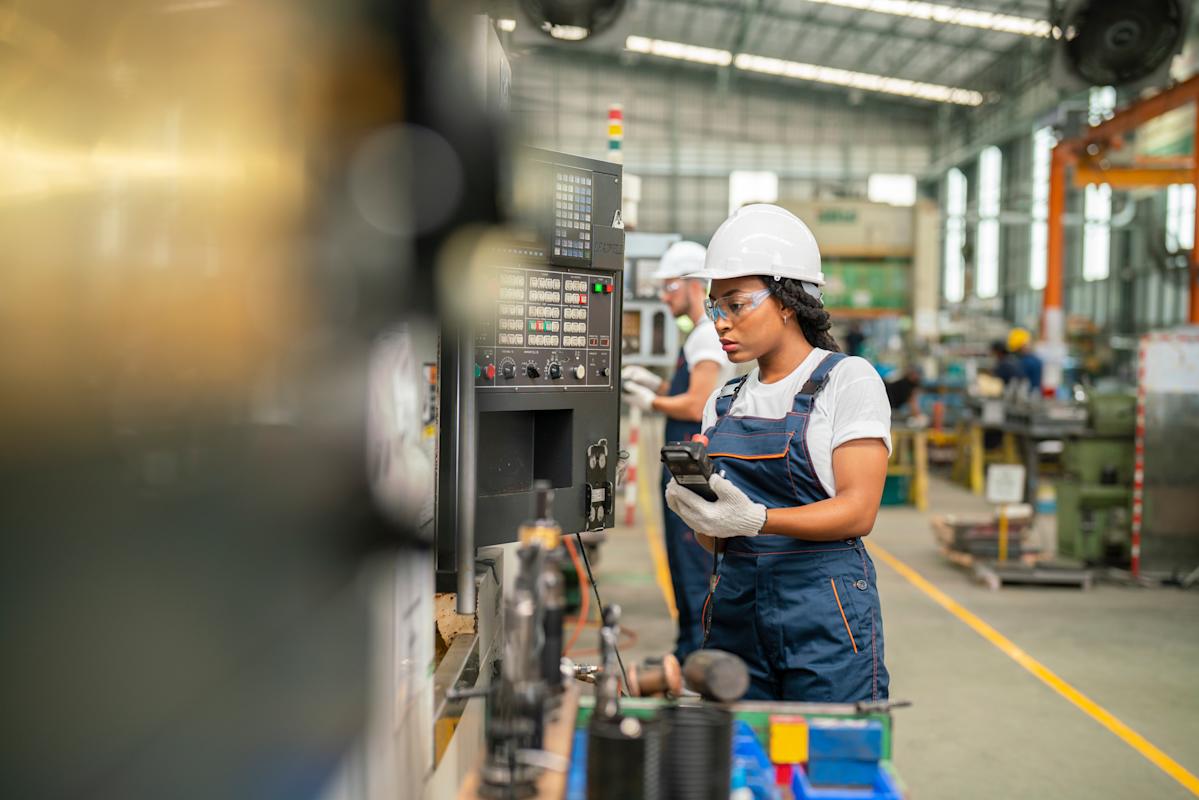The US manufacturing sector continued its sluggish year in August.
Data out Tuesday from the Institute for Supply Management showed the ISM’s manufacturing PMI came in at 48.7 last month, an increase from the reading of 48 seen in July but below estimates for a reading of 48.9, according to Bloomberg data. Readings of less than 50 on the index indicate a contraction in activity in the sector.
This marked the sixth straight month of contraction in the US manufacturing sector, according to the ISM’s reading.
The new orders index within the ISM’s report, however, rose to 51.4, indicating expansion, and marked a strong uptick from the 47.1 seen in July. The production index fell to 47.8 in August from 51.4 in July.
“In August, U.S. manufacturing activity contracted at a slightly slower rate, with new orders growth the biggest factor in the 0.7-percentage point gain of the Manufacturing PMI,” said Susan Spence, chair of the ISM’s survey committee. “However, since production contracted at a rate nearly equal to the expansion in new orders, the Manufacturing PMI increase was nominal.”
Respondents to the ISM’s survey widely cited tariffs as putting pressure on their planning, sales, and costs.
Read more: 5 ways to tariff-proof your finances
One contact in the electrical equipment industry told the ISM they’ve raised prices by 24% so far, but these increases will only offset tariffs, meaning their margins won’t actually improve as a result.
“In two rounds of layoffs, we have let go of about 15 percent of our U.S. workforce,” this contact said. “These are high-paying and high-skilled roles: engineers, marketing, design teams, finance, IT and operations. The administration wants manufacturing jobs in the U.S., but we are losing higher-skilled and higher-paying roles. With no stability in trade and economics, capital expenditures spending and hiring are frozen. It’s survival.”
Read more: The latest news and updates on Trump’s tariffs
Data from S&P Global published Tuesday morning, however, painted a more positive picture of the sector, with the firm’s US manufacturing PMI showing the strongest monthly increase since May 2022.
S&P Global’s US manufacturing PMI came in at 53, above the 49.8 seen in July.
This report also showed, however, that tariffs continue to act as a headwind for manufacturing. S&P Global Market Intelligence’s chief business economist Chris Williamson said in the report that factory inventories rose on concerns over coming price hikes and potential supply constraints.
